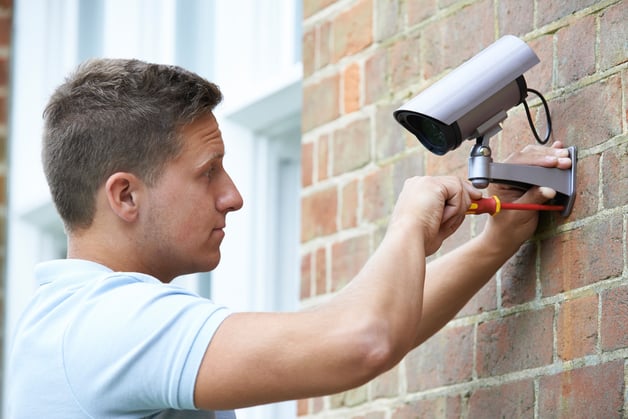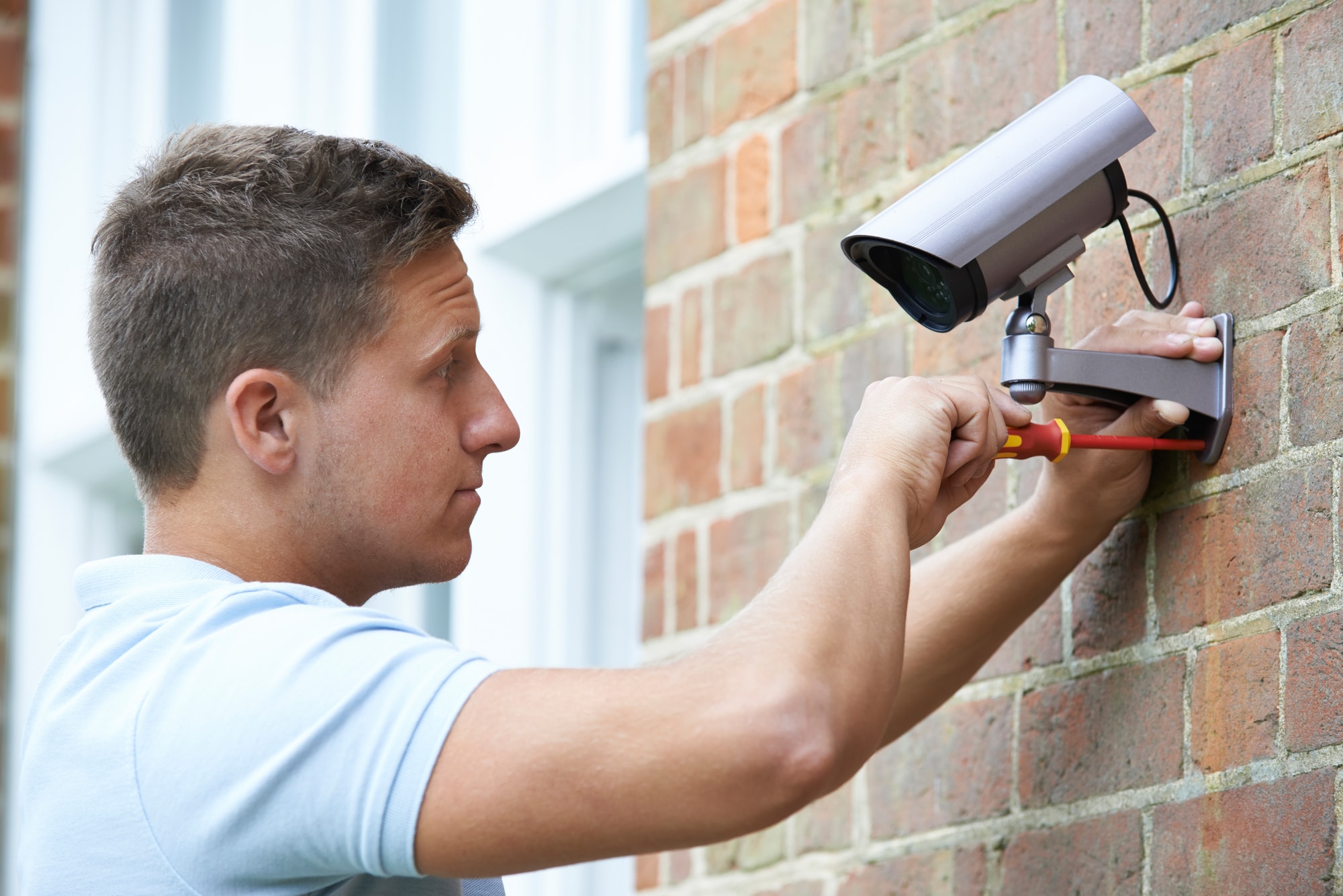Security cameras are essential to monitoring your property and protecting your building. In order to maximize their effectiveness, it’s important to place security cameras optimally to ensure that they cover every inch of your property. When your cameras are placed correctly, you can monitor your entire property at once. We’ve compiled a list of the most important tips to help you place your security cameras to ensure maximum and optimal coverage.

1. Cover the Whole Perimeter
When placing your outdoor security cameras, you should make sure they’re on every side of the building. You’ll want to cover the entire perimeter of your property, placing cameras at different angles to ensure maximum visibility. Placing cameras around the entire perimeter of your building will ensure 360-degree surveillance of your property, which is important to optimal monitoring.
2. Monitor All Entrances
When placing your security cameras, you should make sure that there is one pointing at every entrance/exit. Additionally, you should monitor both sides of these doorways, outside your property and inside. Monitoring entrances is the best way to keep track of everyone who enters and leaves your building. Keeping track of these people will help keep your building safe and help you gather evidence in the event of a break in or other security breach.
3. Make Them Hard to Reach
When placing security cameras, you should use hard to reach locations. They should be high enough that they are out of reach of in order to prevent tampering with. When attempting to enter your building, a burglar might attempt to spray paint the lenses, break or remove your cameras, or cut the wires to disable feeds. Placing your security cameras out of reach will prevent burglars or other lawbreakers from tampering with the cameras in order to keep your building safe.
4. Decide the Optimal Height
When placing security cameras, you need to choose the perfect height. The higher your cameras are placed, the better coverage you’ll have. For this reason, you should place the cameras high enough that you will have good coverage and maximum visibility. However, if your cameras are too high, you will not be able to get detailed footage. In the event of a security issue, cameras that are placed too high will not be able to help you identify the culprit. For this reason, you’ll want to place your security cameras high enough to provide good coverage but low enough to provide detailed footage.
5. Cover Secluded Areas and Restricted Areas
Secluded areas such as alleyways, parking lots, and dumpster pads often invite suspicious activity and crimes such as harassment and assault. For this reason, it’s important to ensure proper security camera coverage of these areas in order to monitor suspicious activity and stop any potentially threatening behavior. If your building has restricted areas, you should place cameras that will help monitor these areas. Cameras are the best way to make sure that no unauthorized visitors enter these areas in order to keep them secure.
6. Integrate Visible and Hidden Cameras
When installing your security cameras, you should use both visible and hidden cameras. Visible cameras are a good deterrent from criminal activity. When people see security cameras, they know they are being monitored and are less likely to commit a crime. However, visible cameras are very vulnerable to damage and vandalism. For this reason, hidden cameras are important to ensure that you still have monitoring capabilities if someone damages your visible cameras. Both of these types of cameras can ensure optimal monitoring capabilities, and the combination will deter potential criminals and keep your building secure.
7. Consider Lighting
It’s important to consider lighting when installing security cameras. If certain areas are not well lit, you will not be able to see them at night, even with your security cameras. For this reason, it’s important to install proper lighting to ensure that your security cameras can provide useful footage and monitoring capabilities at night. Alternatively, if you do not want to provide lighting to areas of your property, you can consider night vision security cameras that will have the capability to monitor dark areas.
8. Focus on High Traffic Areas
When placing security cameras, many people focus on secluded areas because they assume that these areas are higher risk. Monitoring secluded areas is important, but you should make sure that high traffic areas are very well monitored. If certain areas have a lot of activity, you should install extra cameras at different angles. If an emergency or issue occurs in a high traffic area, it can be very difficult to tell what is going on because of the confusion that high activity will cause. Therefore, you should have many different cameras providing footage at different angles to allow the most visibility and the best chance of understanding an incident in these areas.
9. Router Placement
In addition to the placement of your actual security cameras, you should consider the placement of the router. Place the router in a central location that will allow all cameras to reach the signal. When cameras are too far from the router, they will have to work harder, which can drain their battery life faster. In order to avoid issues with signals and premature battery drainage, be sure to place the router in a central location.
10. Have a Security Risk Assessment
When placing security cameras, the best thing you can do to ensure optimal placement is to have a security risk assessment. During the assessment, a professional from a security company will assess your property and identify the most vulnerable areas. They will make expert decisions about camera placement in order to ensure maximum visibility and protection. If you’re placing security cameras in and around your building, you should get an expert opinion to ensure that your building and your people are safe and secure.
United Security Incorporated | Video Surveillance Systems
We know every client’s risks and business objectives are different requiring customized approaches, policies, procedures and requirements. For 26 years we have brought peace of mind to our clients through the careful application of investigative talent and technology implementation. When it comes to the security of your building, it's best not to leave it up to chance. Be sure that you have made every effort possible to keep your property, employees, and visitors well protected. If you have any concerns, you should consider having your security measures evaluated by a reputable company.


